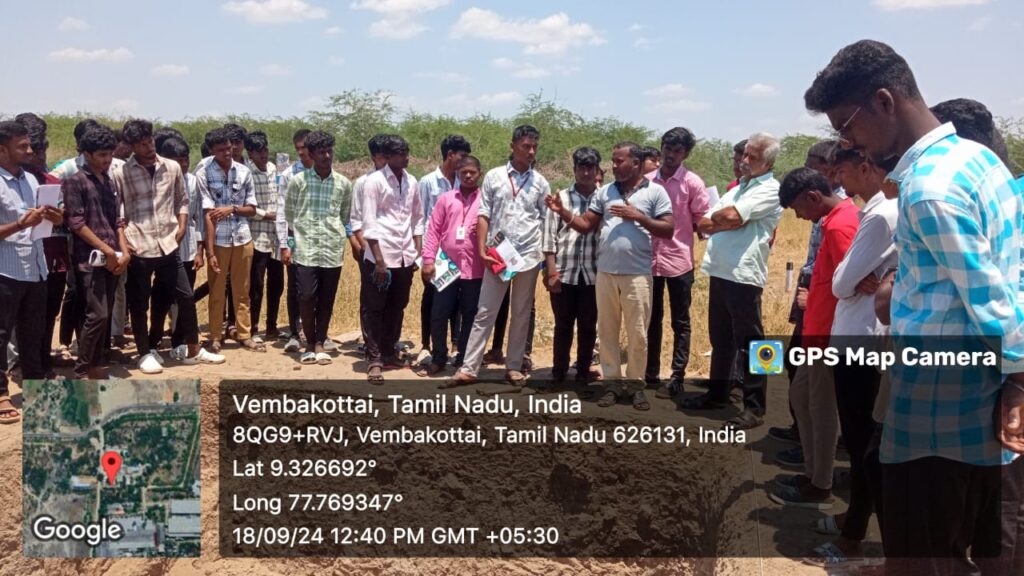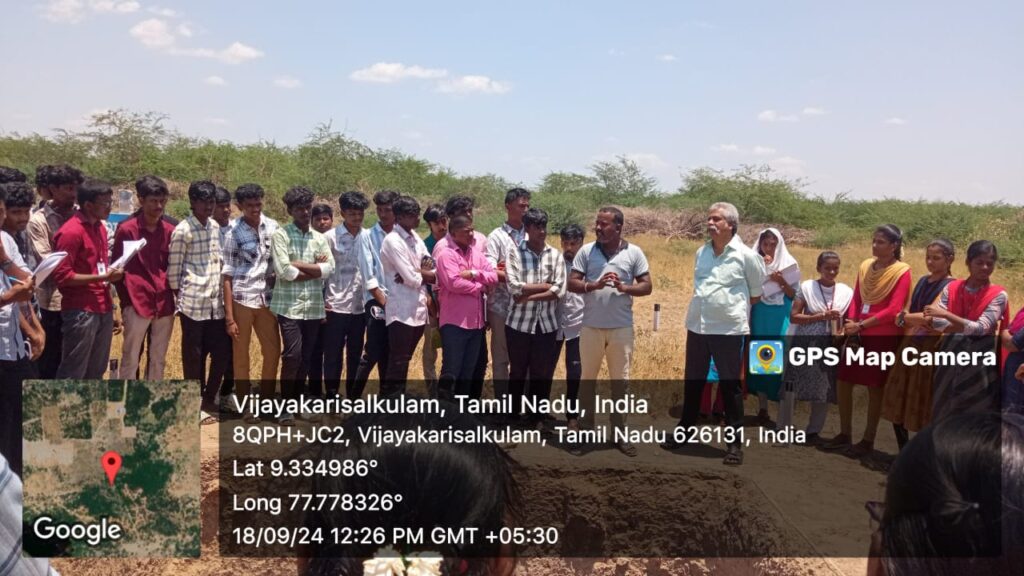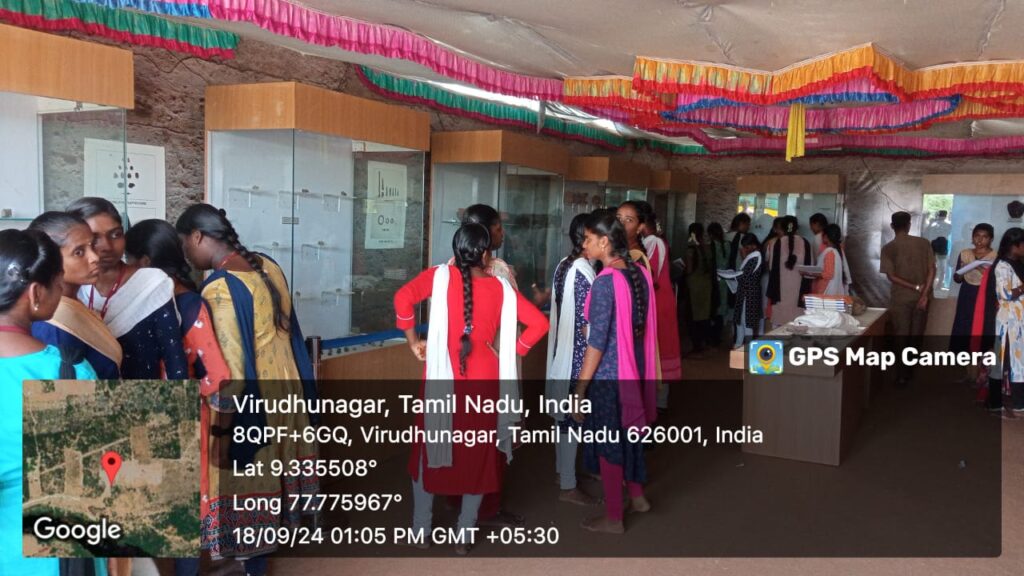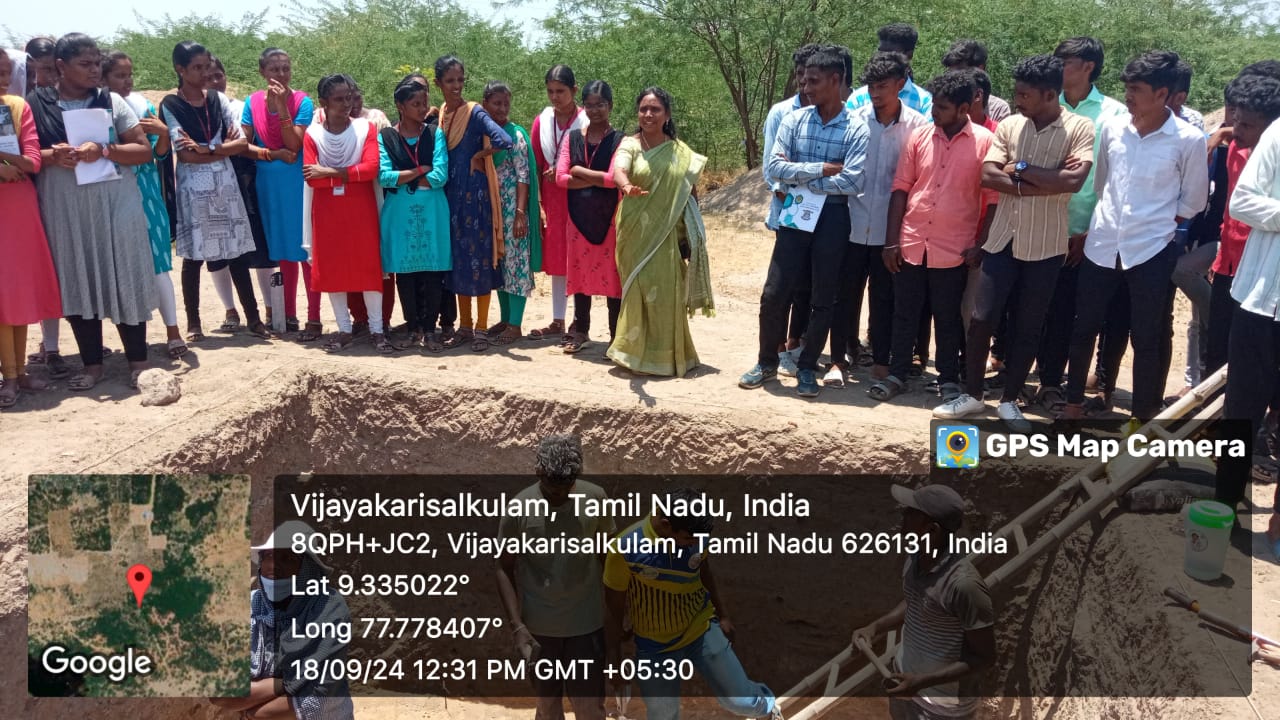The Department of History has organised the Field Visit at Vembakottai Archaeological Excavation Site on 18.09.2024. Tamil Nadu State Department of Archaeology is carried out the Third phase of excavation along the Northern Bank of Vaippar River at Vembakottai in the first week of June 2024. Dr. Pon Basker is the Director of Vembakottai Archaeological Excavation Site.
34 Students from I B.A , 32 Students from II B.A and 50 Students from III B.A of our department participated. Dr. S. Brinda Uma Maheswari Associate Professor and Head, Department of History and Dr. R. Ramanujam, Associate Professor of History had accompanied the students. Dr. Pon Basker, the excavation director took our students near to the excavating trenches and explained the methods how to explore the excavation sites and methods of excavation in Vembakottai (Vijayakarisalkulam).


The Excavation Director said that a total of 7,914 artefacts, including pot shreds, carnelian and glass beads, shell and ivory bangles, hop scotches, iron and copper objects have been found in the first two phases. The artefacts have indicated that people had lived along the bank of Vaippar about 2,000 years ago.
Next our students explored another one of the landmarks to visit the Vembakottai Archaeological On – Site Museum. Dr.Pon Basker, the Excavation Director has explained elaborately regarding to each and every panel of the exhibition.

He pointed out the following things:
- The beads which found in Afghanistan, could have been imported from there to decorate shell bangles, an industry that had been thriving in the region those days. He also cites a copper coin unearthed from the region as a testimony to the existence of trade.
- Many terracotta seals (Vaniga muthirai) have also been unearthed from the site. “While some of the seals are single-dotted, some are six-dotted, some have designs on them and a few have their centre bulged.”Since the site has different seals, it is evident that different groups of people could have come here for work. Each group might have had different seals,” he said, adding terracotta weighing units have also been recovered from here.
- The shell bangles obtained from the site are broken, unfinished, and decorated. “This indicates only the decorative work of the bangles was carried out here. There were neither full shells nor materials used for cutting them. The shells could have been sourced from another place and the cutting works could have been carried out at a different place,” he said, adding the fully decorated shell bangles were exported and the waste (recovered during the excavation) was discarded here.
Our students have learned the skills on Archaeological Surface Exploration, Methods of Excavation and Artefacts through this Field Visit.

















